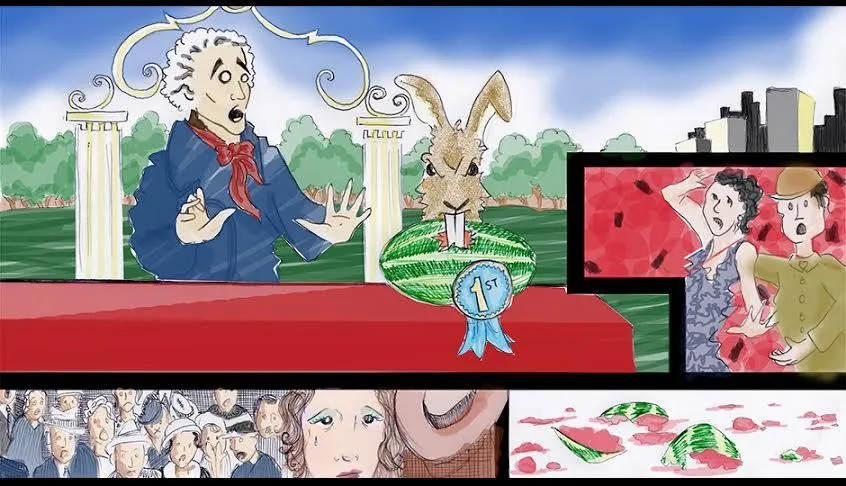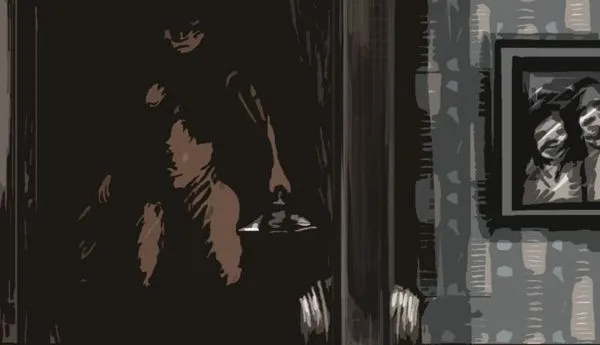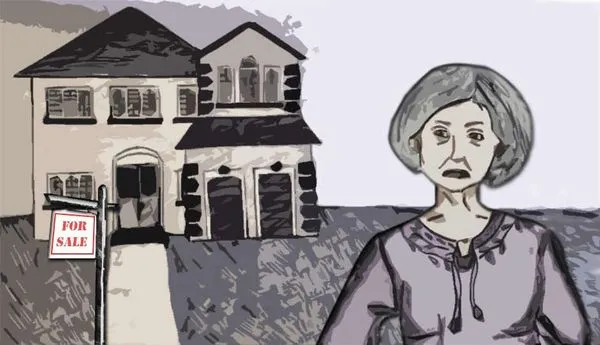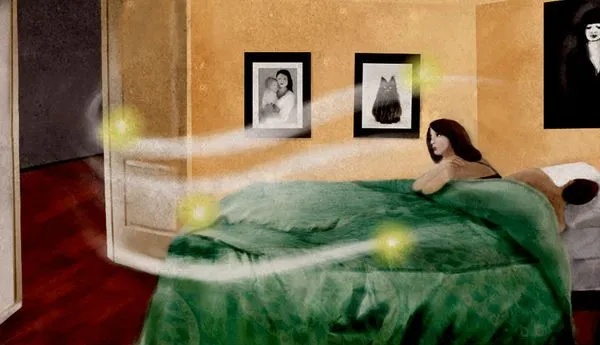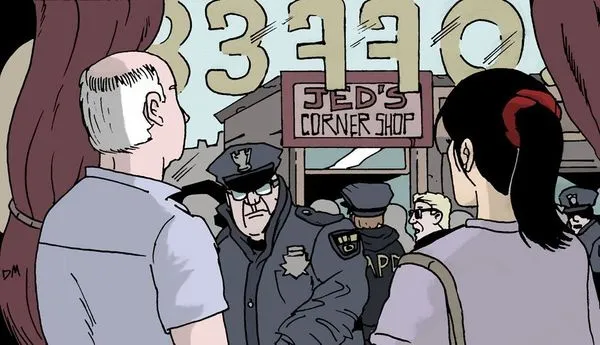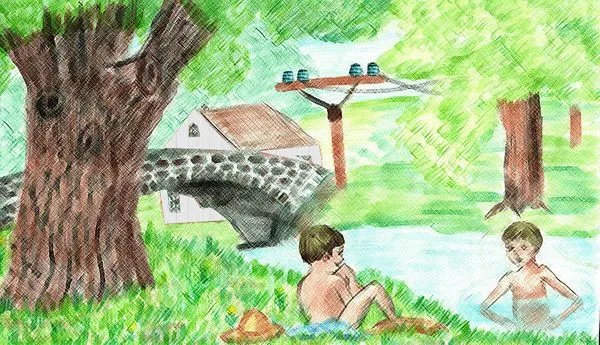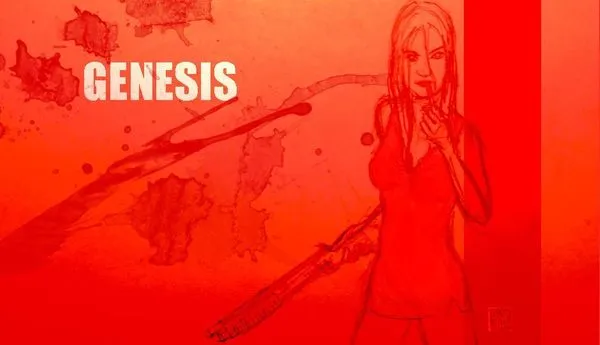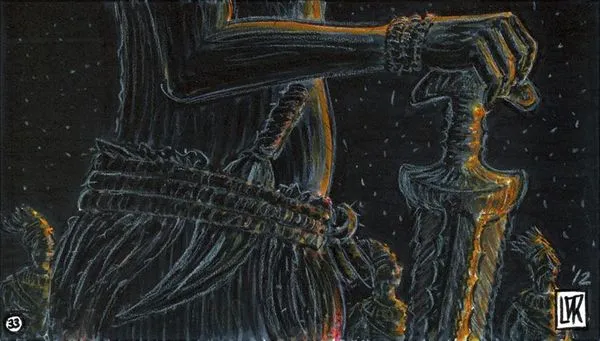The Mystery of the Wantom Flippsbury-Brown Nutcracker Hare
Published on 2014-06-11
In the late nineteenth century, the well-to-do village of Slapbutox-on-Hynde was keen to enhance its image as a thriving community in which well being and prosperity were to be linked to nature and the aesthetic. Fluffy animals in abundant greenery, it was believed, gave a village that look of freshness and charm that is necessary for the attracting of only the finest families who are looking for places to escape to from the foul stenches of the city. Hence, Godfrey Flippsburyborough-Brown, head of the Slapbutox-on-Hynde’s town planning committee, introduced a rare breed of Chinese hare into “the most quaint location upon all the sensuously flowing curves of the River Hynde.”
Flippsburyborough-Brown, who was an avid reader of the “daring exploits of chaps who have expanded the empire”, discovered the hare’s existence by following the pursuits of a certain Lieutenant-Colonel Horiz Turnfoot-Bradbury who, Flippsburyborough-Brown claimed, had once “fought off a pack of Tibetan tribesman only armed with a Remington after his regiment had been pinned down in the Himalayas. It was shortly after this that Turnfoot-Bradbury’s glorified zoology when he nursed one the hares back to health in a remote valley.”
“A more charming and loving and docile creature there is not,” Turnfoot-Bradbury had so poetically written, demonstrating that this “unflinching warrior” had also possessed a delicate side.
The fact that Turnfoot-Bradbury was an inveterate liar was not even considered.
Baby Canton nutcracker hares were introduced into Slapbutox-on-Hynde — placed into cages to be slowly adapted to the village’s verdant surrounds. There was only one difficulty: the mature Canton nutcracker hare has teeth six inches long and when the “sweet babies” matured they tore apart their cages and escaped into the country. People found great holes mauled into their front doors. Battles erupted between cats and hares. The local vet was euphoric. He toasted Flippsburyborough-Brown at a dinner party, saying: “My wife and I have already booked a suite in the Ritz in Paris for next summer’s holidays. Our gratitude for your foresight is boundless.”
People knew that things had gone too far when the squirrels started refusing to come out of the trees.
“It’s terrible,” Marjorie Batsworth-Foxhound told her neighbour. “I haven’t seen a squirrel for days! My afternoon walks have been destroyed by this buck-toothed vermin. I could ring that Flippsburyborough-Brown’s neck!”
The appalling gravity of the horrifying development of the squirrels remaining above ground level got magnified by chewed-up flower beds and by the barking of agitated dogs who had slunk into the fortress refuges of their kennels, their yelping keeping many a resident awake through “horrid nights of ghastly insomnia”, as Lady Broadbutt-Bogpile rightly expressed it one torrid morning in a tea shop.
To add insult to the rising misery, the hares had sex in any place in which they weren’t likely to get run over by cars. Small children feared going out onto the street after one got nipped on the foot. They started spending more time inside, asking their parents embarrassing questions like: “Mummy — why do the hares spend so much time doing that? And what does: ‘They fuck like it’s going out of fashion’ mean? I heard a passing man say this to a someone when I was playing in the garden yesterday.”
“It’s just a game they like to play, dear. We all need games. Let’s play draughts, shall we?”
An emergency meeting was held in which guns and bullets got distributed. Men in pairs began roaming the streets, taking pop shots at what by then was being dryly referred to as “the Wanton Flippsburyborough-Brown nutcracker hare.”
Residents heard explosions followed by comments such as: “Damn fine shot, Darcy”; or: “You’ve only winged him, Harry, but he now knows that the redoubtable residents of Slapbutox-on-Hynde aren’t to be tampered with.”
Things really turned nasty after a particularly dominant Flippsburyborough-Brown male hare sunk its teeth into the mayor’s prize winning watermelon at the annual cultivator’s fair. Dorothy Turnpike-Twister fainted when she saw the animal rise up like “a hairy omen from under the table”, seeing it sink “its vile choppers into Archibald’s magnificent creation.” Thousands visited her in hospital during her “courageous, resilient, fracas recovery from that monster devouring one of nature’s wonders.”
Even the towering magnitude of the watermelon incident got eclipsed by the sordid sight of a ravenous hares charging into a grocer’s and ravaging the carrots. The local newspaper, the Daily Slapbutox On Hynde, described this incident as a “Romanesque orgy of vitamin A and chopping calcium. A pre-Christian cauldron of amoral gluttony.”
Things had become desperate indeed. Patrols got stepped up and the hare population ended up being brought down to acceptable levels, many hares ending up in specially constructed steel cages.
Although there are now no Flippsburyborough-Browns left in Slapbutox-on-Hynde, all members of this family having vanished into obscurity, many having changing their names, some claiming no connection whatsoever with Slapbutox-on-Hynde, (“No, no, no, my family are from Handful-on-Hynde, you must be referring to the Flippsburyborough-Browns not the Trippsburyborough-Hounds”), despite this attempt to erase this affair from the pages of history, everyone in the world now knows what a Wanton Flippsburyborough-Brown nutcracker hare is, even if few know, because of horrifying embarrassment, where the name comes from.
Occasionally, throughout the rest of his life, Flippsburyborough-Brown encountered suspicious looks of wonderment at parties as the odd person would enquire: “Are you Flippsburyborough-Brown?”
“No, I’m not,” he would reply. “Who’s Flippsburyborough-Brown?”
The threat of ignominy hounded poor Flippsburyborough-Brown to his grave.

